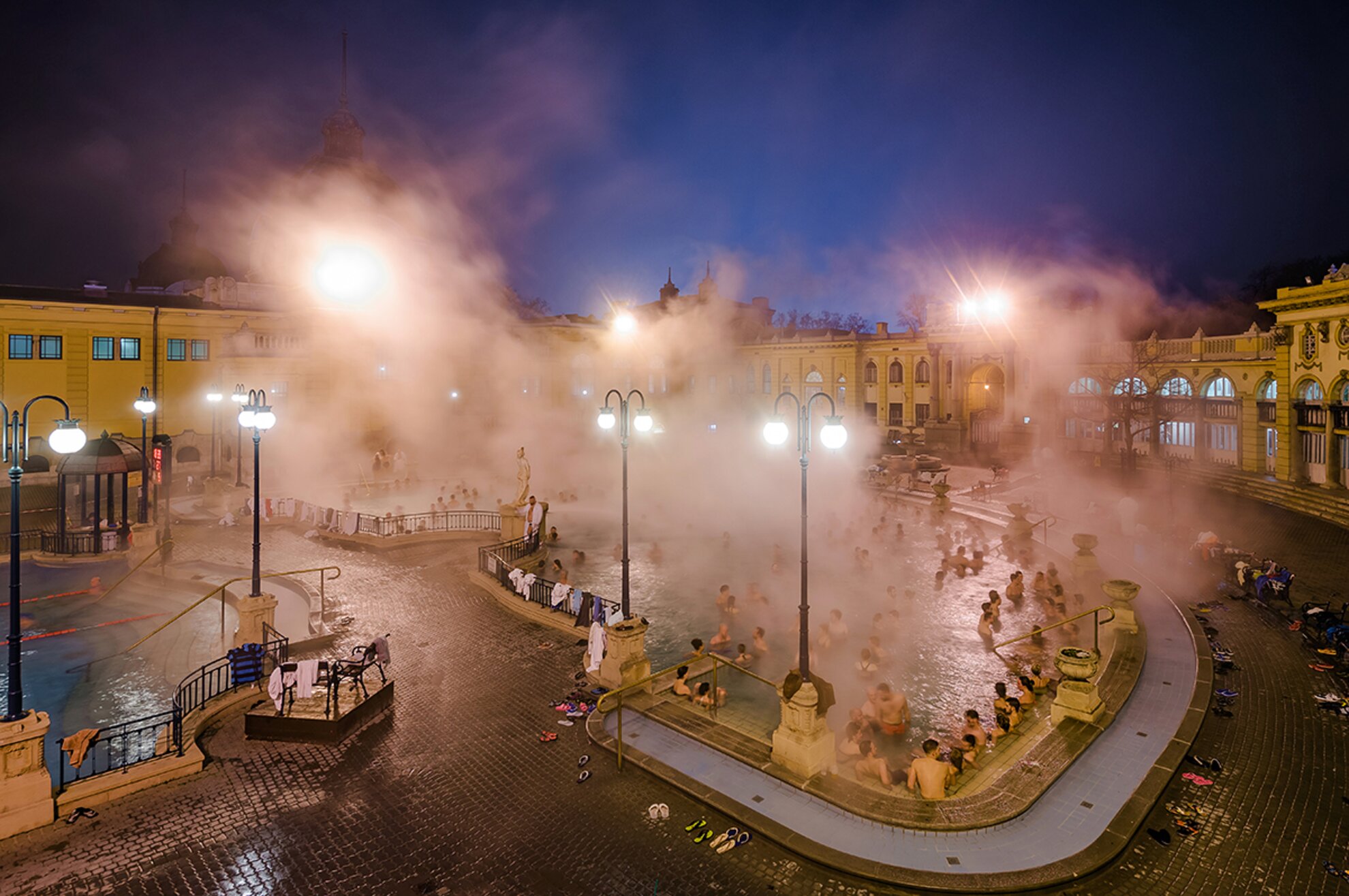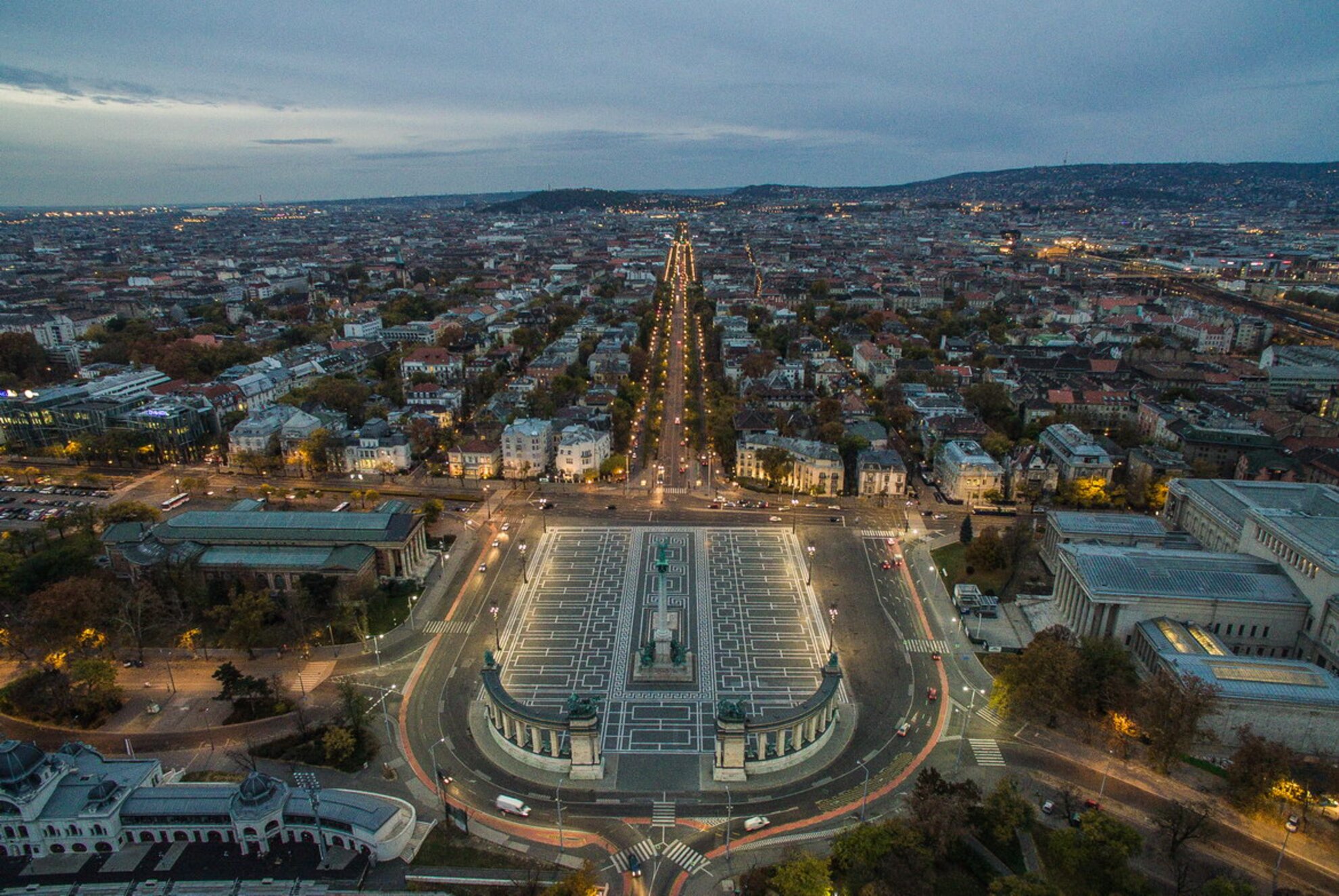The statuesque beauty of Chain Bridge illuminated at night

Embraced with two stone-carved lions at each end, the Chain Bridge is Budapest’s most iconic landmark. Completed by Scot Adam Clark in 1849 as the first permanent span between Buda and Pest, the bridge shines brightly when it’s illuminated every night, but it’s an equally alluring sight during daytime.
Historic Castle District towering above Buda

Almost like another city within Budapest, Castle District defines the Buda landscape with its robust walls embracing century-old sights. Attractions that stand out include Gothic-style Matthias Church, scenic Fishermen’s Bastion and the Royal Palace, currently housing the National Gallery for fine arts.
The giant dome of St. Stephen’s Basilica

Soaring 96 metres high, monumental St. Stephen’s Basilica features a massive dome further elevated by celestial artworks within. The current cupola is the building’s second atrium, after the first one collapsed in 1868 due to construction errors. A circular balcony encompassing the dome welcomes visitors to admire downtown Budapest from above.
The Gothic reflection of Parliament

Crowning focal Kossuth tér, Parliament plays an ornate reflection in the Danube flowing behind the building. It’s equally appealing within, where guided tours allow visitors to view its gilded Dome Hall, marble-lined Grand Stairway and the Holy Crown of Hungary, secured inside behind a glass showcase.
The steamy outdoor pools of the Széchenyi Baths

In winter, curtains of steam rise from the open-air thermal pools of the Széchenyi Baths, where soakers enjoy muscle-melting pleasures come rain or shine. By day, regulars play chess in the water, while the neo-Renaissance complex occasionally turns into a club setting for SPArty nights after dark.
The city's high-standard cuisine

In 2018, Budapest can boast four restaurants with Michelin stars, and Onyx received a second accolade by the esteemed gastronomy guide earlier this year. In addition to these internationally recognised dining destinations, several eateries offer high-quality cuisine, including Zuzu and Stand, both aiming at taking Hungarian gastronomy to new heights.
The signature yellow cars of tram 2

Frequently cited as the most panoramic tram journey in the world, the rattling old-school streetcars of line 2 are often packed with tourists enjoying a ride along the Pest Embankment. The trip reveals the historic sights above the Buda bank, all for a price of a regular transport ticket.
The elaborate architecture of the historic Jewish District

At the heart of Hungary’s Jewish community, the Moorish-style Dohány Street Synagogue towers above what was called the Budapest Ghetto during World War II. This outstanding landmark is not only a place of worship, but also hosts the Hungarian Jewish Museum. Visits around it can be individual or by guided tour.
Hungary’s irresistible pastries

Local cuisine is renowned for its fine confections, some influenced by Austrian and French pastry making. The chocolate-covered zserbó cake with walnut and marmalade, and a slice of vanilla-flavoured Eszterházy are just two of the classic delicacies to try during any visit to Budapest. New-wave hangouts often recreate traditional treats with 21st-century style.
Heroes’ Square from a bird’s-eye view

Honouring men whose lives had major impacts on Hungary’s history, a semi-circular colonnade gives a distinct outline to Heroes’ Square, a City Park gateway that’s similarly enticing when it’s captured with a drone. A centre column is topped with the figure of Archangel Gabriel presenting a crown to the nation’s founding king, St. Stephen.
Art Nouveau splendour of the Gellért Baths

Turning 100 this year, the Art Nouveau Gellért attracts bathers and photographers alike with its picturesque Zsolnay porcelain tiles, turquoise walls and stained-glass windows. Recently, the thermal baths served as a venue for two international photo sessions by Gucci and GQ Magazine that featured Ryan Gosling posing there in a dapper Ralph Lauren suit.
Fairy-tale Vajdahunyad Castle in City Park

Built in next to no time for the 1896 millennial celebrations to commemorate the 1,000th anniversary of the Magyars arriving in Hungary, the former wood structure of Vajdahunyad Castle was reconstructed with hard stone after the festivities concluded. Today, it houses the Museum of Hungarian Agriculture and two of its towers are open for visits.
The magnificent mausoleums at Kerepesi Cemetery

Standing here since the mid-19th century, Kerepesi Cemetery is an open history book containing the graves and ornate mausoleums of eminent Hungarians, including notable poet Mihály Vörösmarty and celebrated painter Károly Lotz. English-language guided tours are available to visitors to reveal lesser-known details.
The gilded interior of New York Café

On any given day, stately New York Café throngs with tourists enjoying international cuisine in an opulent interior of marble columns, crystal chandeliers and red velvet chairs. The palatial structure was a significant literary haunt for the city’s intellectual crowd a century ago, a function that is still preserved today to a certain extent.
The surreal vibe of ruin bars

The disorderly interiors of Budapest’s unique ruin pubs provide otherworldly settings for blurry nights out. These dilapidated structures housed within abandoned buildings are decorated with broken dolls, Mexican motifs, Communist-era Trabant cars and all sorts of random knickknacks. Szimpla, Instant, Csendes and Ellátó Kert are all fine examples of such chaotic design.



